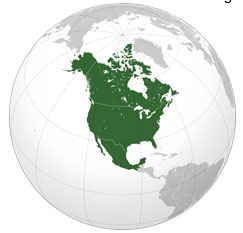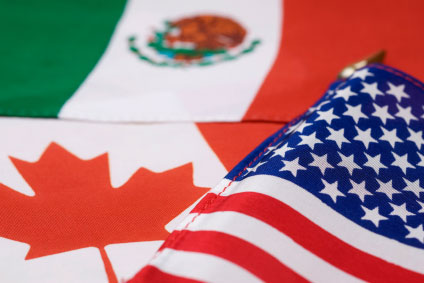
An increase in globalization has led to an increase in global trade. Just as in the ancient times of trade along the Silk Road, the exchange of culture and ideas continues through global trade today.
The element that has changed over time is the addition of trade agreements. Trade agreements are agreements between two or more nations that outline how they will trade with each other. The purpose of a trade agreement is to reduce barriers to trade between countries and facilitate an easier way for the countries to conduct trade.
Cooperation among the participating nations is necessary for the success of the agreements. It is through this cooperation that ideas and cultures are exchanged.

You may be familiar with NAFTA, which is an agreement among Canada, Mexico, and the United States. NAFTA has created the world’s largest free trade area, but more importantly, NAFTA has eliminated trade barriers among the three countries, which has led to varying levels of economic growth and prosperity in all three countries.

NAFTA encourages the free movement of goods and services across the three borders, resulting in an overall economic growth for all three countries. The agreement requires increased communication and cooperation. This cooperation among nations has caused some changes to the cultures in each country.

Mexico joined NAFTA because the agreement promised to promote more investments and economic growth in Mexico. Under NAFTA, Mexico has made noticeable economic progress. Initially, Mexico saw an increase in factories employing low-skilled laborers located along the Mexican side of the U.S. - Mexico border. The growing need for additional skilled workers has led to an increase in education of Mexican citizens. This has led to a larger middle class in Mexico.
Not all effects of NAFTA have been positive, though. More jobs were created, but the wages have remained low. Mexican farmers were forced out of business because of lower agricultural prices in the United States. Many of the farmers were unable to find jobs in the factories, which led to a substantial increase in unemployment. This caused a mass migration to the United States and Canada.
As Mexicans migrated to their neighboring trading partners, traits of their culture permeated the two countries. Evidence of Mexican migration can be seen throughout the United States. The southwestern region of the United States displays a strong presence of the Mexican culture seen through the language, food, and customs. Many of those who have immigrated have also become American citizens while maintaining elements of Mexico’s culture.

Canada has also seen an increase in the Mexican migrant population. Initially, many immigrated to the United States, but because large quantities of illegal immigrants were crossing the border, many states began increasing security and imposing immigration policies. Thus, Canada became a viable option. As migration to Canada increases, many Mexicans are taking advantage of the benefits Canada has to offer, by attending college, for example. Due to the increased migration into the country, Canada has recently imposed the requirement of visas for Mexicans coming to live in Canada.
For more information about NAFTA, see module 2, lesson 8, The Patterns and Implications of Globalization. In the next section, you will examine another trade agreement and learn how it impacts the culture of the trade area.
Sources for images used in this section, as they appear top to bottom: